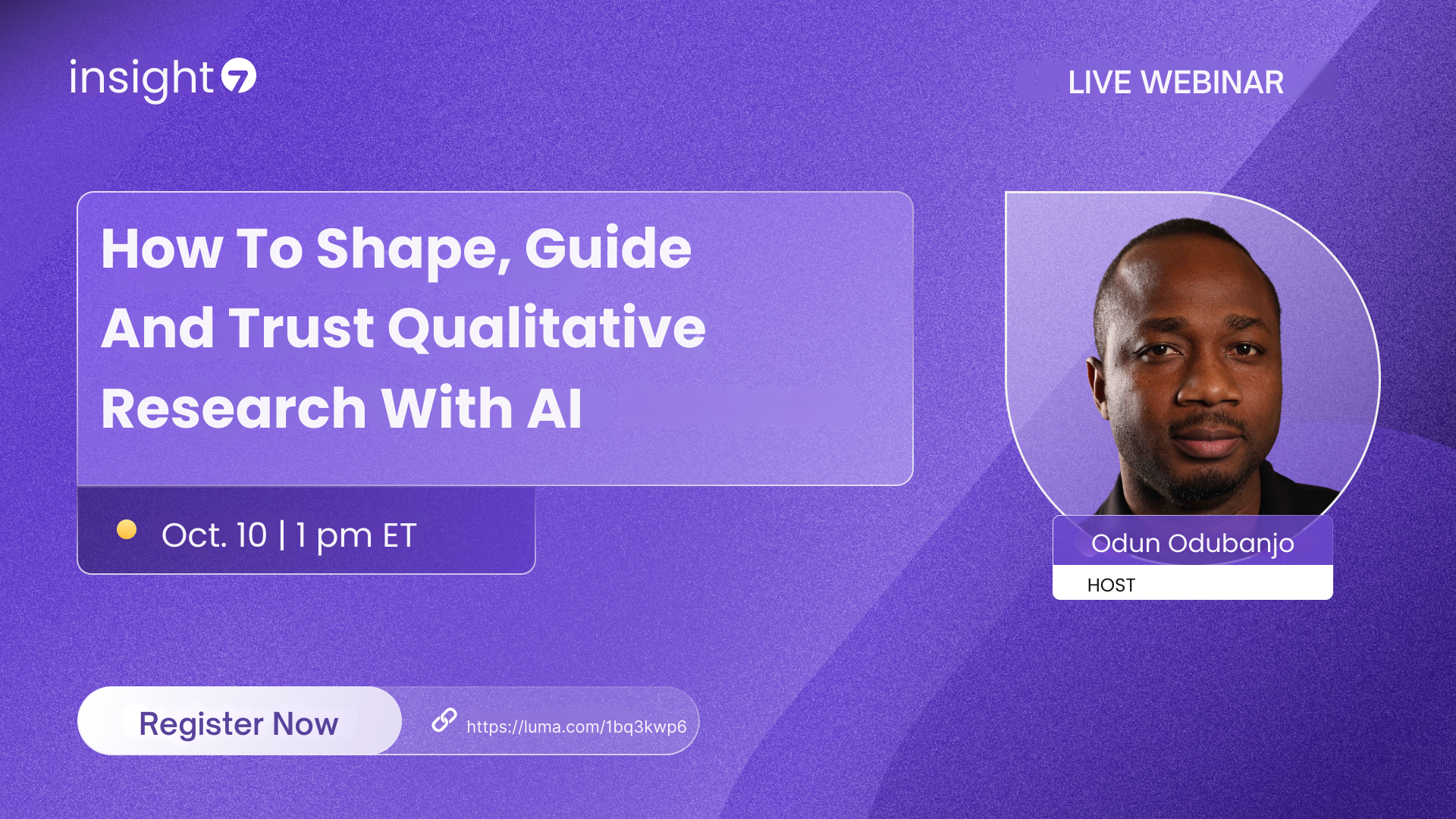Analyze the Effectiveness of Feedback Loops in Leadership Development
-
Bella Williams
- 10 min read
In an era where effective leadership is crucial for organizational success, the concept of feedback loops becomes increasingly relevant. Feedback loop efficacy refers to the systematic process through which leaders receive, analyze, and act upon feedback to foster growth and development. This iterative process resembles a dynamic conversation, one that encourages transparency and cultivates an environment for improvement.
As organizations strive to adapt in a rapidly changing landscape, understanding feedback loop efficacy in leadership development helps build stronger leaders. It equips them with the tools to enhance their skills continuously and effectively address challenges. By fostering a culture of open dialogue and constructive criticism, organizations can ensure that their leadership teams are better prepared to navigate complex situations and drive innovation.
Analyze & Evaluate Calls. At Scale.

Understanding Feedback Loop Efficacy: Key Concepts
Understanding Feedback Loop Efficacy is essential for leaders seeking to enhance their effectiveness. Feedback loops are dynamic systems where input, processing, and output continuously interact. This mechanism allows leaders to assess their performance and adapt practices in real-time, fostering improvement in leadership strategies. Familiarity with the components of feedback loops, such as data collection, analysis, and response, can significantly elevate a leader's ability to drive organizational growth.
In leadership development, the significance of effective feedback loop efficacy cannot be overstated. Various types of feedback loops exist, including formal and informal channels that facilitate open communication. By understanding these concepts, leaders can better implement feedback mechanisms, ensuring they remain responsive to team needs. Effective feedback loops not only enhance leadership skills but also promote a culture of continuous improvement within teams, leading to more innovative and adaptive organizations.
The Basics of Feedback Loops
Feedback loops serve as essential mechanisms for leaders to improve and refine their effectiveness continually. By establishing a structured process that encourages consistent input and evaluation, leaders can better understand their impact on team dynamics and organizational culture. In essence, feedback loops enable leaders to receive valuable insights about their leadership style, effectiveness, and areas for potential improvement.
There are two primary types of feedback loops in leadership: formal and informal. Formal feedback loops often include structured performance reviews, where clear metrics are established to measure success. Conversely, informal feedback loops may occur through casual conversations and spontaneous check-ins, providing immediate reactions and suggestions. Both types foster a culture of openness and adaptability, thereby enhancing feedback loop efficacy, which is vital to personal and organizational growth. Investing in these loops ensures that leadership development remains a dynamic and responsive process.
- Definition and Components
Feedback Loop Efficacy refers to the systematic approach in leadership development, defining how leaders initiate and respond to feedback. It encompasses a continuous process where information about performance is exchanged between leaders and their teams, fostering an environment of trust and improvement.
Key components of feedback loops in leadership development include communication, evaluation, and adaptation. Effective communication ensures that feedback is both shared and understood, allowing leaders to assess their impact accurately. Evaluation comes from reflective practices, where leaders analyze feedback to identify strengths and areas for growth. Finally, adaptation involves implementing necessary changes based on the received feedback, demonstrating a commitment to growth. By integrating these components, leaders can enhance their effectiveness, build stronger teams, and drive sustainable organizational success.
Understanding these elements is crucial for leaders aiming to harness the full potential of feedback loop efficacy in their development journey.
- Types of Feedback Loops in Leadership
In leadership development, understanding the different types of feedback loops is essential for enhancing feedback loop efficacy. Feedback loops generally can be categorized into three main types: reactive, proactive, and interactive. Reactive feedback occurs after a leadership action, allowing leaders to assess performance and make adjustments. Proactive feedback, on the other hand, focuses on anticipating future challenges and providing guidance before issues arise. Finally, interactive feedback fosters an ongoing dialogue between leaders and team members, creating an environment of continuous improvement.
Each type of feedback loop brings unique advantages in leadership development. Reactive loops help in identifying areas for immediate improvement, while proactive loops enhance strategic planning. Interactive loops stimulate engagement and trust among team members, ultimately fostering a more supportive workplace culture. By recognizing these feedback loop types, leaders can create strategies to maximize feedback loop efficacy, leading to improved communication and more effective leadership overall.
The Role of Feedback Loops in Leadership Development
Feedback loop efficacy plays a transformative role in leadership development, serving as a mechanism for ongoing growth and accountability. Leaders who actively engage in feedback conversations foster a culture of transparency and mutual respect, allowing for improved communication. Rather than relying on traditional methods, such as the feedback sandwich, effective leaders encourage open dialogue that invites input from team members. This shift not only enhances trust but also encourages individuals to reflect and learn from their experiences.
Furthermore, feedback loops help identify areas for improvement while reinforcing positive behaviors. By regularly assessing performance and facilitating constructive discussions, leaders empower their teams to take ownership of their development. This process not only aids in developing specific skills but also contributes to a supportive environment where continuous improvement is expected and celebrated. Embracing feedback loops can thus significantly enhance leadership capabilities while creating a more engaged and productive workforce.
- Enhancing Leadership Skills
Enhancing leadership skills is a critical aspect of effective management and team dynamics. Leaders who actively engage in feedback loops can refine their abilities, foster communication, and inspire their teams to reach new heights. By creating an environment where feedback is welcomed, leaders can better understand the needs and perspectives of their team members. This process significantly enhances the communication effectiveness between leaders and their teams, promoting a culture of transparency and growth.
In this continuous improvement journey, leaders should focus on becoming better listeners. By paying full attention to their team, leaders can build trust and respect, laying a foundation for more productive interactions. Investing time in understanding team dynamics enables leaders to adapt to change and inspire their members effectively. Overall, feedback loop efficacy not only strengthens leadership skills but also cultivates a thriving organizational culture that prioritizes development and motivation.
- Promoting Continuous Improvement
Continuous improvement fosters an environment where leaders develop and grow through learning. By establishing an effective feedback loop, managers can encourage a culture of openness and accountability. Continuous feedback not only informs leaders about their current performance but also highlights areas for growth. This iterative process cultivates resilience, adapting to challenges and fostering an environment where being wrong is merely a stepping stone to success.
To effectively promote continuous improvement, organizations should focus on three key elements. First, they must cultivate a safe space for open dialogue, allowing team members to express concerns and share observations. Second, feedback should be constructive and goal-oriented, helping individuals understand what changes can be made. Finally, leadership must demonstrate a genuine commitment to acting on feedback, solidifying the importance of this practice. By prioritizing these elements, organizations can enhance feedback loop efficacy to drive transformative leadership development.
Extract insights from interviews, calls, surveys and reviews for insights in minutes
Implementing Effective Feedback Loops: Strategies for Success
To implement effective feedback loops, leaders must adopt strategic approaches that promote ongoing development and adaptability. First, it's crucial to set clear goals that not only define desired outcomes but also establish the benchmarks for assessing progress. Leaders should encourage open dialogue, creating an environment where constructive feedback can flourish. This collaborative spirit enhances feedback loop efficacy, enabling leaders to address specific challenges while fostering growth.
Next, gathering feedback is vital. Leaders should actively solicit input from team members, utilizing tools like Insight7 to analyze responses effectively. This process encourages diverse perspectives and leads to rich insights. Finally, implementing changes based on the feedback is essential. Embracing feedback as a catalyst for transformation helps create a culture of continuous learning. By following these strategies, organizations can strengthen their leadership development and enhance overall team performance.
Steps to Establish Feedback Loop Efficacy
To establish feedback loop efficacy in leadership development, it is essential to follow a structured approach. Begin by setting clear goals that define what you intend to achieve through the feedback process. These objectives should align with the overall vision of leadership growth within the organization. Well-defined goals create a roadmap, ensuring that both leaders and team members understand the desired outcomes of their interactions.
Next, gather constructive feedback from various sources. This may include peer evaluations, self-assessments, and performance reviews. Encouraging open communication fosters an environment where team members feel safe sharing their insights. Effective feedback should be actionable and specific, enabling leaders to identify areas needing improvement. Lastly, implement changes based on the feedback received. This step is crucial, as it demonstrates a commitment to growth and continuous improvement. By actively adapting leadership practices, organizations can enhance feedback loop efficacy and create a culture of ongoing development.
- Step 1: Setting Clear Goals
Setting clear goals is fundamental for driving effective feedback loop efficacy in leadership development. This initial step enables leaders to articulate their vision, creating a shared understanding among team members. When goals are defined precisely, it establishes a focused environment where feedback can be directed towards achieving specific outcomes. This clarity not only enhances accountability but also encourages constructive dialogue, reinforcing the importance of meaningful work within the organization.
Moreover, clear goals pave the way for a structured feedback process. By aligning feedback mechanisms with these objectives, leaders can evaluate performance more effectively. This promotes a culture of openness where feedback is viewed as a tool for growth rather than criticism. Ultimately, this alignment fosters a stronger organizational culture and enhances leadership skills, driving continuous improvement. Therefore, a clear goal-setting strategy is imperative for maximizing the efficacy of feedback loops in the context of leadership development.
- Step 2: Gathering Constructive Feedback
Gathering constructive feedback is a crucial step in enhancing feedback loop efficacy. It involves eliciting open responses from team members and creating a safe environment for open dialogue. By focusing on what individuals believe they excel at and where they can improve, leaders demonstrate a sincere investment in the growth of their team. This transparency not only fosters trust but also encourages others to reciprocate with their insights.
The feedback process should prioritize conversation over critique. Instead of the traditional feedback sandwich, engaging in dialogues can lead to richer insights. Ask open-ended questions that prompt reflection and invite team members to share their perspectives. This dynamic facilitates a more genuine exchange, promoting continuous improvement. Ultimately, a well-structured feedback process contributes to effective leadership development, highlighting the importance of constructive feedback in establishing robust feedback loops.
- Step 3: Implementing Changes
To implement changes effectively, leaders must first assess the feedback collected. Recognizing patterns in this feedback is crucial for understanding its overall impact. This introspection allows leaders to pinpoint areas for improvement and design targeted interventions. By establishing an adaptable action plan, leaders can facilitate the necessary adjustments to encourage growth. Prioritizing consistent communication during this stage ensures that all team members remain aligned with the evolving objectives.
Moreover, tracking the outcomes of these changes is essential for measuring feedback loop efficacy. Evaluating the effectiveness of implemented strategies can highlight successful actions and identify areas that still need enhancement. Regular follow-ups on feedback also foster a culture of open dialogue, encouraging team members to share their thoughts. This ongoing process reinforces the importance of feedback loops as foundational elements in leadership development, ultimately paving the way for sustained organizational improvement.
Tools for Enhancing Feedback Loop Efficacy
Effective feedback loop efficacy in leadership development requires the right tools to facilitate meaningful communication and engagement. By implementing innovative solutions, leaders can assess and enhance their development process. Tools like Insight7, 15Five, and Lattice allow for regular feedback collection and promote a culture of continuous improvement.
Utilizing platforms such as TinyPulse and Officevibe can also support open dialogue, enabling leaders to gather insights from their teams effectively. These tools not only streamline the feedback process but also ensure that it aligns with established goals. Ultimately, fostering an environment where feedback is valued and acted upon can significantly improve overall leadership effectiveness and foster a culture of transparency and accountability. Given the importance of these tools, integrating them into leadership strategies can lead to substantial advancements in personal and organizational growth.
- Insight7
Feedback Loop Efficacy plays a crucial role in developing effective leadership skills. Understanding how these feedback loops operate can significantly enhance a leader's ability to adapt and grow. Feedback is not merely a tool for assessment; it serves as a continuous process that drives improvement. A leader equipped with a defined feedback loop can better navigate challenges and influence their team positively.
To maximize Feedback Loop Efficacy, leaders must focus on a few key strategies. First, they should set clear goals that align with both personal and organizational objectives. Next, actively gathering constructive feedback from team members fosters an environment of trust and openness. Finally, leaders must be willing to implement changes based on this feedback, demonstrating responsiveness and commitment to collective growth. By embracing these strategies, leadership development can transform, creating a more effective and agile organizational culture.
- 15Five
In leadership development, understanding and utilizing effective feedback loops is essential. Introducing structured methods for gathering impressions and insights can greatly enhance feedback loop efficacy. One proven approach is targeted tool utilization, where leadership development resources like dedicated platforms facilitate a streamlined process. These tools support leaders in collecting and managing feedback from their teams, ensuring that every voice is heard and addressed.
Effective feedback loops foster an environment of transparency and trust, transforming how information flows within an organization. When leaders actively seek input and show receptivity to suggestions, team engagement heightens, promoting a culture of continuous improvement. Ultimately, these feedback mechanisms empower leadership practices that are adaptable, responsive, and oriented towards collective growth, ensuring that the organization stays dynamic amid change. Encouraging leaders to prioritize these feedback loops is crucial for fostering a resilient, innovative workforce ready to tackle future challenges.
- Lattice
In leadership development, the concept of a lattice represents a seamless and interconnected approach to growth. Unlike traditional hierarchical structures, a lattice encourages flexibility and open communication among team members. This connectivity enhances feedback loop efficacy, fostering an environment where input is not only welcomed but actively sought and valued. The ability to share insights and observations across various levels promotes continuous improvement and innovation within organizations.
Furthermore, the lattice model supports diverse pathways for leadership development. Individuals are encouraged to pursue different roles and responsibilities, allowing them to enhance their skills in various contexts. This adaptability ensures that feedback loops remain effective, as leaders can draw from a wealth of experiences and perspectives. Ultimately, adopting a lattice framework cultivates a culture of resilience and agility, essential qualities for navigating the complexities of modern leadership landscapes.
- TinyPulse
In exploring the significance of feedback loops, we consider how platforms like TinyPulse can facilitate the process. These tools enable regular check-ins, allowing team members to provide insights that are crucial for growth. This ongoing exchange enhances feedback loop efficacy by ensuring that everyone feels heard and valued, fostering a culture of transparency.
Additionally, implementing such platforms can lead to improvement in leadership development. Not only do they collect feedback, but they also stimulate conversations that motivate leaders to adapt and grow. By embracing this innovative approach, organizations can build dynamic leadership teams capable of responding to changing environments, ultimately cultivating a more resilient workplace culture. The key is in utilizing these tools effectively to create actionable insights that drive continuous development and inspire leaders to embrace their roles actively.
- Officevibe
In the context of enhancing leadership development, the role of Officevibe cannot be overlooked. This platform provides a structured environment for leaders to gather and process feedback, fostering a dialogue that is paramount for growth. By utilizing anonymous surveys, leaders can gain insights into team morale, engagement levels, and areas needing attention. This promotes a culture where employees feel valued and heard, ultimately contributing to overall organizational success.
Moreover, Officevibe assists in understanding the dynamics of team interactions. Leaders can identify patterns in feedback to create actionable strategies for improvement. This process enhances feedback loop efficacy by ensuring that input leads to tangible changes. In this way, leaders are empowered to cultivate not only their own skills but also the capacities of their teams, paving the way for continuous, iterative development and engagement in the workplace.
Conclusion: The Long-term Impact of Feedback Loop Efficacy in Leadership
The long-term impact of feedback loop efficacy in leadership is profound, shaping not only individual leaders but also entire organizations. When leaders embrace effective feedback mechanisms, they foster an environment of continuous growth and improvement. This proactive approach leads to enhanced communication skills, allowing leaders to better engage their teams. Consequently, this increased engagement translates into positive organizational outcomes and improved team dynamics.
Furthermore, a consistent practice of feedback loop efficacy cultivates a culture of accountability and collaboration. Leaders who actively seek input can make informed decisions, adapt strategies, and ultimately guide their teams toward success. The lasting effects of such practices create resilient leadership capable of navigating challenges while nurturing a productive workplace atmosphere.







